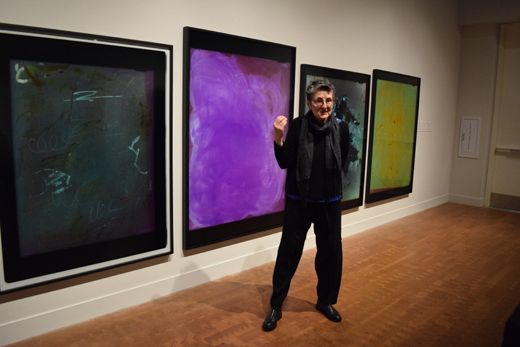
By Donald H. Harrison

SAN DIEGO – Before the opening of the Panama Canal in 1915, Australia, from a nautical standpoint, was approximately 3,500 miles closer to California than New York was. Goods brought by ship from the American East Coast had to travel a longer route, all the way down the eastern coast of the Americas , around Cape Horn, and then all the way back up the western coast of the South, Central and North American land mass. In contrast, goods brought to California from Australia could come quicker, typically over calmer seas. In Gold Rush days, numerous import businesses in San Francisco were established by Australians. From San Francisco, coastal sailboats and steamers subsequently brought their goods to San Diego.
Now San Diego’s Museum of Photographic Arts (MOPA) is having an exhibition of contemporary art from Australia that will remain up until Sept. 24th. Whereas many museums tend to be Euro-centric in their orientation, the photography museum desires to focus on the countries of the Pacific Basin, MOPA’s executive director and chief curator Deborah Klochko commented at a media briefing on Tuesday. Previously, the museum exhibited photography from Mexico, and after the Australian exhibition, it plans to mount photographs from China. The museum is located in Balboa Park, which was created to celebrate the opening of the Panama Canal– a development that brought Europe and the U.S. East Coast nautically much closer to San Diego than before.
Represented in the current exhibit are 13 photographers, who utilize a variety of photographic techniques to tell their stories. Some are quite representational, others quite abstract. Enjoying prime space in the exhibit are four eye-catching photo-shopped images by photographer Michael Cook entitled “Invasion.” Cook is of aboriginal descent, and in this set of photographs, he reverses history. Whereas the British some 200 years ago colonized Australia, changing forever the lives of the Aboriginal people who had lived on the continent for some 65,000 years, in Cook’s four images, it is Great Britain that is being invaded by aliens who look like the people and animals of pre-British Australia. As Londoners run terrified from beams shot from space ships, we see such animals as parrots, wombats and kangaroos taking up positions in a traumatized London.
Klochko said that Cook hired about 50 character actors to portray the emotionally wrought Londoners, and had a team of 25 people make and process the images, which he then manipulated using Photoshop to create his dramatic series. “While there is a sense of humor here, he is making an important and biting comment about what was happening to his people,” Klochko said.

In contrast to Cook’s highly representational art are a series of abstract photographs by Justine Varga that were created without a camera. “This goes to the beginnings of photography … laying objects on sensitive paper, exposing it to light, and you end up with an image,” Klochko explained. However abstract the images might appear to the casual observer, “in fact, they are portraits that go down to the DNA level – genetic portraits, where she is having people like her grandmother mark it and put her own saliva on it, and then she processes it. You will find in some areas fingerprints. So, these are blown up to the scale that we see here.”
Jacky Redgate is another abstract photographer whose work is represented in the exhibition. Various objects were placed on a floor and photographed from above, and then assembled, via Photoshop, into a montage. “Photography,” commented Klochko “isn’t reality, even if it is a documentary of a photojournalist. Photography is about choice and about a point of view. Whoever has got the camera clicking the shutter … takes us a step away from a single truth. There are multiple truths.”
Well represented in the exhibition are the works of Tracey Moffatt, whose haunting city scapes depict a sense of homelessness. Their gloominess contrasts dramatically with the “Eden” series of Polixeni Papapetrou, in which young women wear floral prints and are surrounded by lush foliage.

A surprise is a photographic essay by Hoda Afshar, an Iranian immigrant to Australia, who went back to Iran and photographed gay men in a bath house. In Iran, homosexual activity is against the law, and there is a sadness and poignancy about the images. “There also is a sense of intimacy that is quite tender,” Klochko comments. “The mist of the bathhouse contributes to the haziness that we are looking at.”
Other artists from Australia represented in the exhibition are Polly Borland, Pat Brassington, Rosemary Laing, Trent Parke, Patrick Pound, James Tylor, and Ricky Maynard.
*
Harrison is editor of San Diego Jewish World. He may be contacted via donald.harrison@sdjewishworld.com